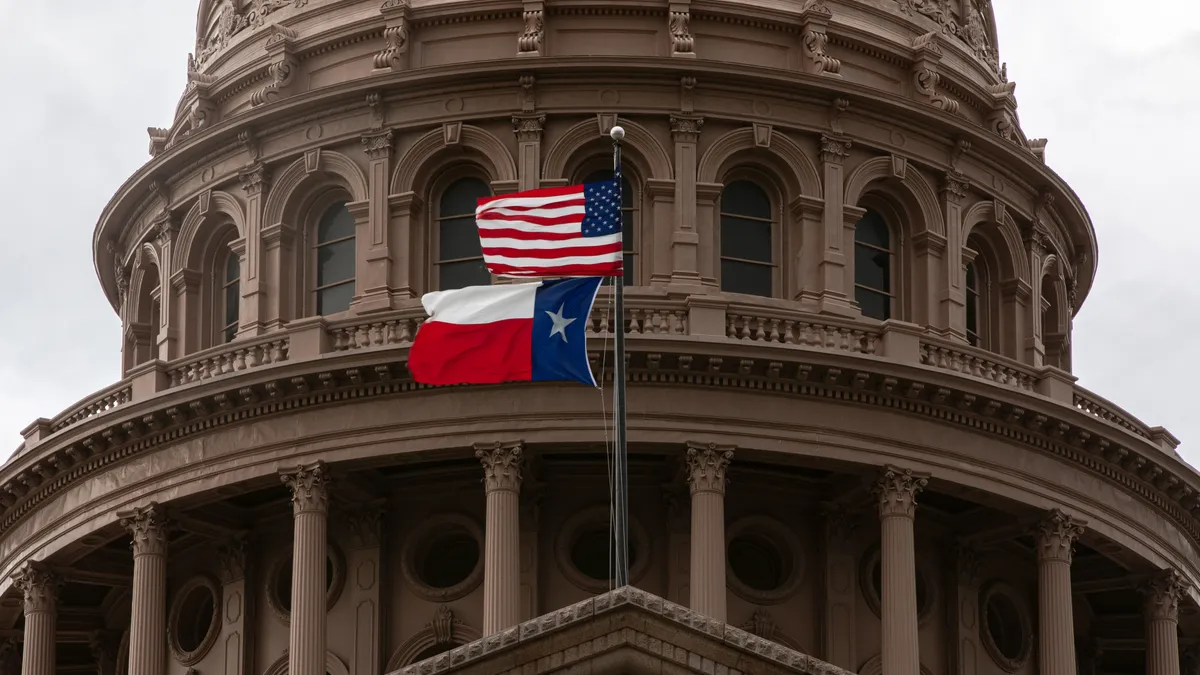During the late Harold Love Sr.'s long tenure as a state representative in Tennessee from 1968 to 1994, he was intimately aware of underfunding at the state's only public historically Black college. In his early days as a legislator, he helped spearhead a committee that discovered the state had shortchanged Tennessee State University.
Tennessee State is one of 19 land-grant HBCUs established by the Second Morrill Act of 1890. The act prohibited the federal government from sending certain funds to states whose land-grant colleges refused to admit non-White students. However, states could keep receiving those funds if they also provided non-White students with separate institutions.
Even under federal law today, states are supposed to equitably divide federal funds flowing to their land-grant institutions — which in Tennessee's case are Tennessee State and the University of Tennessee. But Love Sr. discovered that hadn't been the case.
"In one particular year, 1970, $4.5 million came to Tennessee to be divided among the two land grants, but only $51,000 went to Tennessee State," Harold Love Jr., his son, told Higher Ed Dive last year. "So he said, 'That's not equitable. That's not fair. That's 99-to-1."
A half a century later, Love Jr. took up his father's fight.
The underfunding issue has multiple dimensions, said Love Jr., who today is also a Tennessee state representative. The question concerns basic funding Tennessee State receives from the state as well as the money the state allocates from the federal government to its two land-grant institutions. But the state is also required to provide a matching grant for every dollar its land-grant institutions receive from the federal government.
"That's not fair. That's 99-to-1."

Harold Love Jr.
Tennessee representative
Love Jr. helped spearhead a 2021 report that found Tennessee may have skipped making up to $544 million of those matching payments to Tennessee State over several decades, forcing the university to draw from its own budget to compensate for the underfunding. If the state doesn't give Tennessee State the match, the university can either forfeit the federal money or come up with the match itself out of its general funds, Love Jr. said.
The work championed by Love Jr., a Democrat, sparked Tennessee Gov. Bill Lee, a Republican, to propose giving the university $250 million in the 2023 fiscal year to upgrade its facilities. Lee's budget also includes $60 million for a new engineering building and $8 million for maintenance.
Love Jr. told Higher Ed Dive in February that it's a tremendous honor to finish his father's work.
"This is by far one of the most satisfying things I've been able to do as a legislator because I know that my father really wanted to make sure that Tennessee State University received the equal amount of funding that they should have received," Love said. "To have his work be the foundation upon what this investment is being built on — I think, for me — I'm very pleased."
Tennessee State has applauded the budget proposal, and higher education experts agree the funding is needed. Still, some argue the proposal doesn't go nearly far enough to fix decades of inequities in state funding that forced the university to make do with less than it deserved.
"It's necessary, but it's insufficient for accounting for the loss that TSU has experienced over its existence," said Royel Johnson, an education professor at the University of Southern California. "Equity is not just about giving an institution what it is legally owed, but it's accounting for what is the loss, the impact of not having those resources."
Is Tennessee State owed $1 billion?
William Johnson, a human performance and sports sciences professor at Tennessee State, has seen firsthand how the underfunding has affected the university's ability to conduct research and carry out other duties.
"We've had superstar faculty members — big-time researchers here — who have both been here, conducted some research, but then realized that the laboratory facilities and research support aren't here for them to continue on their path," William Johnson said. "So they leave."
The campus is dotted with other visible reminders of the funding disparities.
"There's lots and lots and lots of deferred maintenance and crumbling buildings and all those kind of things," William Johnson said.
A 2020 report from JLL, a real estate services company, found nine campus buildings would be in poor condition or worse if they didn't receive maintenance within a year. It estimated that fixing those and other issues would cost $88.6 million, and that those deferred maintenance costs would grow to $427.5 million within a decade. .
Tennessee State President Glenda Glover lauded the governor’s budget plan, which would give the university $318 million in one-time capital funding, in a statement to Tennessee Lookout, saying the money will directly benefit the university's faculty, staff and students as well as all state residents. Repairs could begin as soon as July if Tennessee lawmakers approve the budget proposal.
While the facilities upgrades are needed, William Johnson contended the proposed pot of money doesn't address what the university has missed out on from decades of underfunding. And higher education experts said the money shouldn't be restricted to capital improvements.
"The Legislature doesn't want to hear this and certainly my institution doesn't want me to say this, but is the damage actually $1 billion?" William Johnson said. "Is it $2 billion? Is it $6 billion? Who knows what the opportunities would have been?"
A history of underfunding
Tennessee's Legislature didn't begin meeting its match requirement for Tennessee State until 2017, Forbes recently reported. But Tennessee State isn't alone in this situation: A 2013 report from the Association of Public and Land-grant Universities found several other HBCUs missed out on state matches over a two-year period studied.
These issues have caught the attention of federal lawmakers. In February, six Democratic representatives pointed out in a letter that the 19 land-grant HBCUs received only 82% of the state matches they were eligible for in fiscal 2020, while their counterparts received 100% of the funds they were due.
In Forbes' analysis, the writers compared per-student state funding for predominantly White land-grant universities with their counterpart HBCUs. Had they been funded equally, the publication found, Tennessee State would have received $1.9 billion more during the 1987-2020 period studied.
Only Florida A&M University and North Carolina A&T State University — which were underfunded by $1.9 billion and $2.8 billion, respectively — had missed out on larger levels of funding, according to the analysis.
Forbes said some of the disparities can be explained by the research strength of some of the predominantly White institutions that it studied. However, the authors wrote, this can create a self-fulfilling prophecy, where predominantly White institutions' ability to conduct research grows as a result of years of generous state funding, while their HBCU counterparts are forced to work with much less.
"It just becomes an unfair playing field when our HBCUs are forced to have to use their own discretionary funds to cover costs that other state governments regularly give to primarily White institutions," said Erin Lynch, associate provost of scholarship, research, and innovation at Winston-Salem State University, an HBCU in North Carolina. "It really does perpetuate underresourced communities."
Still, many HBCUs have thriving student populations despite their history of being underfunded. In 2016, HBCUs comprised just 9% of four-year institutions in the states where they were located but awarded 26% of all bachelor's degrees to Black students, according to a 2019 report from UNCF, which advocates on behalf of private HBCUs.
The organization also found HBCUs annually generate around 134,000 jobs and create a $14.8 billion economic impact for their local and regional economies.
"Imagine what the economic impact could have been if they had been funded at the same level of other flagship institutions or other non-minority-serving institutions in their state," Lynch said
Lynch, also a former student and employee at Tennessee State, argued $250 million is not enough to remedy underfunding at the university. Still, she and other higher education experts are hopeful the budget proposal will kick off similar discussions across other states.
"I hope it forces people to actually take a second look at what they're doing," Lynch said.






















